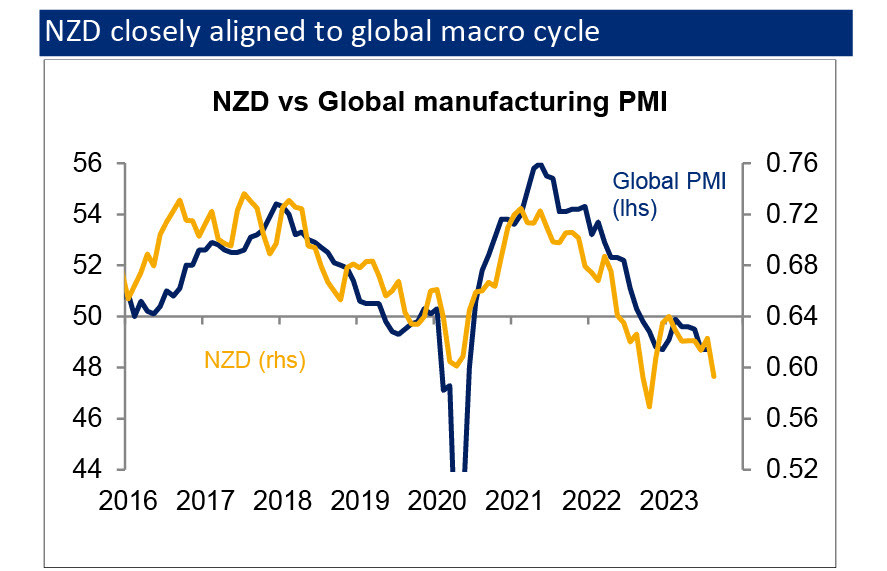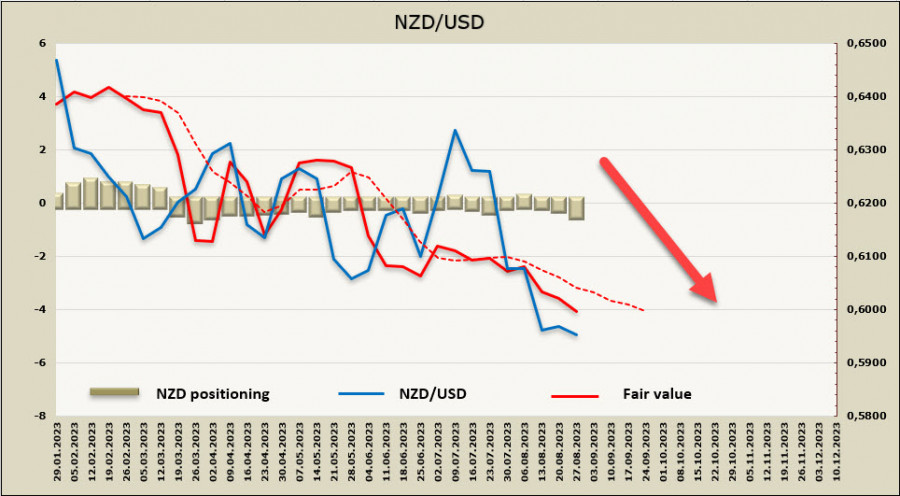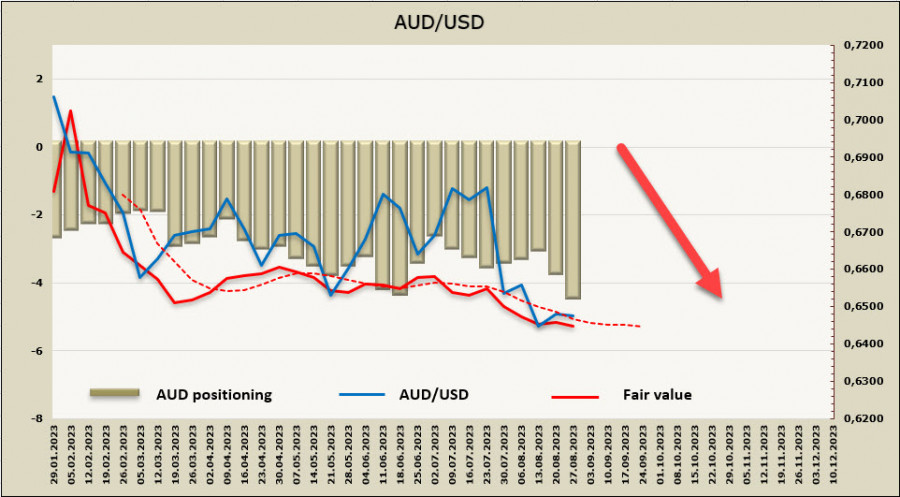A slip in US consumer confidence and the JOLT report, confirming views of a softer-than-expected labor market, led to dollar sell-offs. US stocks rose sharply: the S&P 500 index rose by 1.5%, marking its third consecutive day of growth, while the yield on US bonds is falling, triggered by a decline in the yield of two-year bonds due to reduced forecasts for the Federal Reserve's rate.
The number of job vacancies dropped to 8.8 million in July, down from 9.2 million in June. In addition, June's figure was initially reported as 9.6 million, which is significantly below the consensus of 9.5 million. JOLT continues to indicate that the labor market has indeed softened, despite the sideways movement of the unemployment rate. The number of vacancies has decreased by more than a quarter since March, while the unemployment rate has decreased by a tenth.
The Conference Board said its consumer confidence index dropped to 106.1 this month, well below estimates of 116. The decline is synchronously noted in both the Present Situation Index and the Expectations Index, and it confirms the trend that was reported by the University of Michigan last Friday.
Pressure on the Fed is easing, the chances of another rate hike has become lower, so the dollar getting weaker in the current conditions is quite logical.
NZD/USD
On Thursday morning, the ANZ business survey will be published, which will show whether the New Zealand economy is moving towards recession or positive shifts are emerging. Retail trade data showed that the economy is slowing down, with trade volumes dropping by 1% Q/Q, below forecasts. It becomes increasingly evident that monetary policy is having the desired effect on cooling demand in the economy. Momentum is clearly decreasing, but the Reserve Bank of New Zealand still has an issue with core inflation, which hasn't shown any significant decline yet.
The NZD rate has a strong correlation with global cycles, so a global economic slowdown will put pressure on the kiwi.

Last week we also saw new evidence of deteriorating external demand: New Zealand's trade deficit of $1.1 billion in July was larger than the estimated $0.7 billion, due to a significant decline in exports. As we noted earlier, global dairy product prices plummeted at recent Global Dairy Trade auctions. Since these prices reflect forward contracts, it will take some time for them to be reflected in official trade data, suggesting further declines in the coming months.
For now, it appears that the economic slowdown is in full swing, so predictions for the RBNZ rate do not anticipate a sudden increase. Accordingly, there aren't any signals about the kiwi's succeeding growth.
The net short position on the NZD increased by 0.2 billion to -0.39 billion over the reporting week, speculative positioning is shifting from neutral towards bearish. The price firmly remains below the long-term average and is directed downward.

After rapidly falling, the kiwi is now in consolidation territory, and the attempt to develop a bullish growth seems unconvincing. The correction could lift NZD/USD to a resistance of 0.6010, but a succeeding decline looks more plausible. The target is the support zone of 0.5815/35, and if there are no signs of corrective growth upon reaching this level, then it might breach the channel's lower band and fall further.
AUD/USD
The Consumer Price Index (CPI) for July came in at an annual rate of 4.9% from 5.4% in June, which is below the forecast of 5.62%. It's unclear how this figure will be perceived by the Reserve Bank of Australia, as the core inflation components have remained virtually unchanged. In addition, fuel prices will increase in August and September, which will push inflation upwards.
The RBA will hold its next meeting on September 5. On Tuesday, the future head of the RBA, Michelle Bullock, stated in her speech that inflation remains high and warned of the potential need for further rate hikes. In general, markets did not receive any new information, and the aussie continues to be pressured by a combination of factors, which, in addition to high inflation, includes China's slowdown that might aid in cooling the Australian economy.
The net short position on the AUD increased by 0.6 billion to -4.1 billion over the reporting week, positioning remains firmly bearish, and the price remains below the long-term average and is heading downward.

As expected, the aussie corrected to the resistance of 0.6490; the bulls lacked the strength for a more pronounced correction. Given the US dollar's weakness, the aussie might correct to 0.6560, which is the midpoint of the bearish channel, but under current conditions, it seems more likely for the pair to form a local low and start a downward movement. The immediate target is 0.6365, followed by the support zone of 0.6310/30, which is currently the main objective.
The material has been provided by InstaForex Company - www.instaforex.comfrom Forex analysis review https://ift.tt/bXeBL4t
via IFTTT
